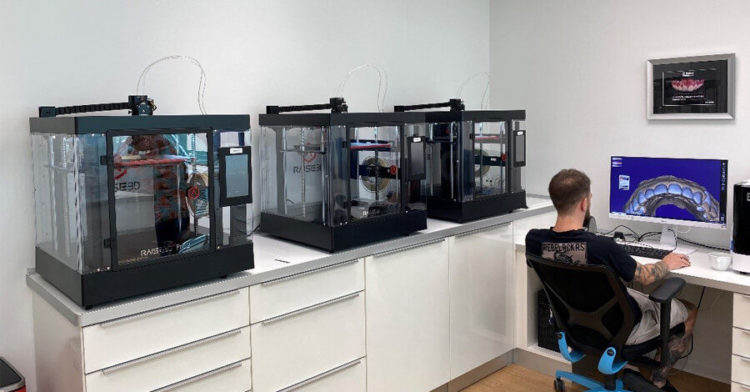Orthodontic treatment has evolved significantly over the years, driven by technological advancements, innovative research, and a growing demand for more efficient and patient-friendly solutions. As we approach 2024, several emerging trends and new approaches are shaping the future of orthodontics. This article explores these advancements, including digital technologies, personalized treatment options, novel appliances, and advancements in biomechanics and biomaterials, which are poised to redefine orthodontic care in the near future.
Digital Technologies in Orthodontics
3D Imaging and Treatment Planning
The adoption of 3D imaging technologies such as cone-beam computed tomography (CBCT) and intraoral scanners has revolutionized orthodontic diagnostics and treatment planning. By capturing detailed anatomical structures in three dimensions, orthodontists can accurately assess dental and skeletal relationships, predict treatment outcomes, and design customized treatment plans tailored to individual patient needs.
SEE ALSO: Is Wisdom Teeth Removal Orthodontics?
Virtual Treatment Simulation
Virtual treatment simulation software allows orthodontists to show patients potential treatment outcomes before starting therapy. This interactive approach enhances patient communication and engagement, enabling informed decision-making and aligning patient expectations with achievable results.
3D Printing of Orthodontic Appliances
The integration of 3D printing technology enables the fabrication of precise and patient-specific orthodontic appliances, including clear aligners, custom brackets, and indirect bonding trays. This technology not only enhances treatment efficiency but also improves the fit and comfort of orthodontic devices, contributing to better treatment outcomes and patient satisfaction.
Personalized Treatment Approaches
Precision Medicine in Orthodontics
Advancements in genetics and biomarkers are paving the way for personalized orthodontic treatments. Genetic testing and phenotypic analysis may help predict patient response to specific orthodontic interventions, guiding treatment decisions and optimizing therapeutic outcomes.
Artificial Intelligence (AI) in Treatment Planning
AI-powered algorithms analyze vast amounts of patient data to generate optimized treatment plans based on individual characteristics and treatment goals. Machine learning models can assist orthodontists in predicting tooth movement patterns, optimizing treatment timelines, and minimizing treatment complexities.
Customized Appliance Design
Orthodontic appliances tailored to individual patient needs are becoming increasingly common. From digitally designed brackets to patient-specific archwires and customized biomechanical approaches, these innovations aim to enhance treatment efficiency, reduce treatment duration, and improve overall patient comfort.
Novel Orthodontic Appliances And Techniques
Self-Ligating Brackets
Self-ligating brackets continue to evolve with enhanced designs that reduce friction, simplify archwire changes, and promote more efficient tooth movement. These brackets may incorporate advanced materials and surface coatings to minimize plaque accumulation and improve oral hygiene during treatment.
Lingual Orthodontics
Lingual braces placed on the inner surface of teeth offer a discreet alternative to traditional braces. Advances in lingual bracket design and customization techniques improve patient comfort and treatment efficiency while achieving predictable outcomes in complex malocclusions.
Clear Aligner Therapy
Clear aligner therapy remains a popular choice for patients seeking aesthetic orthodontic treatment. Innovations in material science, digital treatment planning, and aligner fabrication techniques are enhancing the accuracy and predictability of clear aligner therapy, expanding its applicability to a wider range of malocclusions.
Advancements in Biomechanics And Biomaterials
Biocompatible Orthodontic Materials
The development of biocompatible materials for orthodontic appliances aims to minimize adverse tissue reactions and improve patient comfort during treatment. Advances in biomaterials research focus on enhancing mechanical properties, durability, and biocompatibility of orthodontic wires, brackets, and aligners.
Accelerated Orthodontics
Techniques for accelerating tooth movement, such as low-level laser therapy, vibrational devices, and surgical adjuncts, are gaining attention in orthodontic practice. These approaches aim to shorten treatment duration, reduce discomfort, and optimize patient outcomes through enhanced bone remodeling and accelerated tooth alignment.
Minimally Invasive Orthodontics
Minimally invasive approaches prioritize preserving dental structure and supporting tissues while achieving optimal esthetic and functional outcomes. Techniques such as micro-osteoperforations and aligner-based treatments with minimal interproximal reducti on offer conservative alternatives to traditional orthodontic interventions.
Patient-Centered Care And Experience
Teleorthodontics and Remote Monitoring
Teleorthodontics platforms enable virtual consultations, treatment progress monitoring, and patient communication, enhancing access to orthodontic care and convenience for patients. Remote monitoring technologies, including smartphone apps and wearable devices, facilitate real-time feedback and proactive management of treatment progress.
Enhanced Patient Comfort and Compliance
Innovations in orthodontic appliance design focus on improving patient comfort and compliance throughout treatment.
From ergonomic aligner trays to pain-reducing technologies and patient education tools, these advancements aim to optimize treatment outcomes while minimizing treatment-related discomfort and inconvenience.
Ethical And Regulatory Considerations
Patient Safety and Regulatory Oversight
As orthodontic technologies continue to evolve, ensuring patient safety, ethical practice standards, and regulatory compliance remains paramount. Orthodontic professionals must adhere to evidence-based guidelines, ethical principles, and regulatory requirements to uphold patient trust and deliver high-quality care.
Conclusion
The future of orthodontic treatment in 2024 promises exciting advancements driven by digital technologies, personalized treatment approaches, novel appliances, and innovations in biomechanics and biomaterials. These developments are reshaping the landscape of orthodontic care, enhancing treatment precision, efficiency, and patient satisfaction.
Orthodontists and dental professionals embracing these new approaches are poised to deliver superior orthodontic outcomes while meeting the evolving needs and expectations of patients in an increasingly digital and patient-centered healthcare environment.

